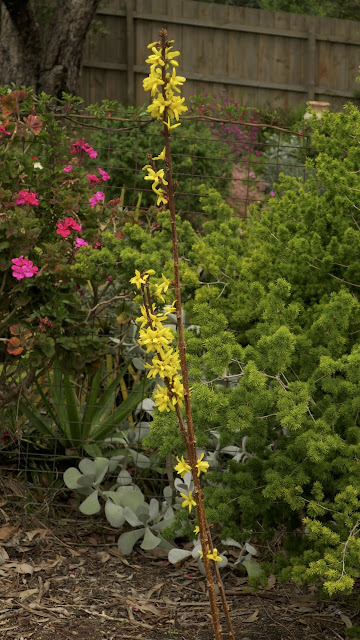Last Wednesday we arrived back at Torquay to signs of spring. Bright sunshine alternating with cold southerly winds and some welcome rain.
Spring blossom was very evident in the main street. I don't know the tree. But, the flowers have a pea form.
The forsythia given to me by Shirley last year has flourished and is now about about a metre high.
I remember seeing forsythia the size of small trees in Japan and never thought it would grow in our poor soil. What a joy.
The big surprise was this plant. It popped up at the base of a stephanandra incisa, that I had transplanted in autumn. The leaves and growth looked to me like a violet, but the flower is yellow.
A quick consultation with Trish solved the question. She had given me the stephanandra a bit over a couple of years ago. The flower is a Lesser Celandine, ficaria verna. It must be tough to have survived two summers and only just come up at the end of this winter.
I made this weeks ikebana quite some time ago. The only logic for including it today are the yellow flowers, two ball chrysanthemums, in a vertical arrangement using New Zealand flax leaves from the garden.
Click here to see the final instalment of photos from our holiday.
Finally, congratulations to my colleague and fellow Sogetsu ikebana artist Emily Karanikolopoulos who, with the artist John Meade, was awarded the Southern Way McClelland Commission.
Greetings from Christopher
30th September 2018
























































